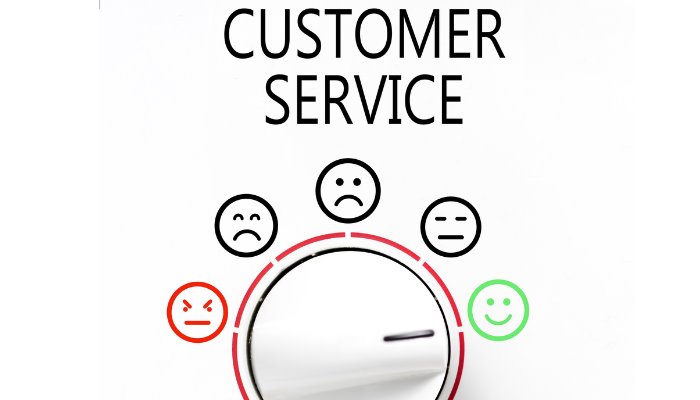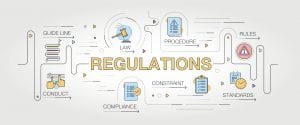By Shannelle Krebbs, Operations Manager
Determining inbound service level goals is one of the most important factors for anyone responsible for the inbound call center function. Determining the right inbound service level goal is not straight forward. A study conducted by AT&T 30 years ago determined that 80% of calls should be answered in 20 seconds or less. This was based off research that indicated that many callers would hang up the call after waiting for 20 seconds. Referred to as the 80/20 rule, this began the foundation for determining benchmarks for inbound service level standards. This study was conducted before the majority of inbound call centers implemented technology that is considered standard today, including Integrated Voice Response (IVR), Priority Queueing for high value customers based on the phone number they are calling from, In-Queue expected wait time announcements and In-Queue self-service options.
Identifying if the 80/20 rule is appropriate is not black and white. To balance efficiency vs providing a higher service level for your inbound calls, here are some key factors to consider before determining your inbound service level goals.
Inbound Service Level Goals: Factor Number 1
Know your customer or prospect. If you have a good understanding of why the customer or prospect is calling and how long they will typically wait on hold is crucial. If the customer is willing to wait a bit longer to speak to a representative because their issue or question cannot be handled by any other means (such as self-service IVR, web, chat, or email) then you may get by with less staffing and a lower service level goal like 70% within 60 seconds.
Does your company offer any other methods for the customer or prospect to contact your organization? In the last 10 years, most companies have invested heavily in providing alternate channels like self-service IVR, web self- service, chat and email to decrease the number of inbound calls that the company receives. And most importantly, is your customer or prospect likely to use these alternate contact methods? It comes down to knowing your customer or prospect.
Inbound Service Level Goals Factor Number 2
What is the value of a call? When determining what an Inbound Call Center service level goal should be, it is also important to consider the overall reason for the call and the value to your company. Is it a sales driven call or a service driven call? If it is a sales call, the last thing a call center manager wants is a customer hanging up and calling a competitor because they could not get through to an agent (resulting in lost revenue for the company). Most companies prioritize sales calls using prompts like “Press 1 for sales” and “Press 2 for Service” to easily identify sales calls and route them as a priority to the available agents with a higher inbound service level goal for the sales calls.
Inbound Service Level Goals: Factor Number 3
Does a variable goal make sense? As you evaluate volume patterns by day of week, day of month, month of the year, or other seasonal volume fluctuations, would it make sense to set inbound service level goals that are variable? If the cost of adding staff to meet “peak season” staffing requirements is extraordinary, it may make sense to establish a lower service level goal for certain peak season days of the year and then measure the results to identify if occasional lower service levels hurt your customer satisfaction scores or result in an unacceptable abandon rate (% of callers that abandon after 20 seconds is typically the primary way to measure abandon rate). In my experience, most inbound call centers work to maintain a less than 5% abandon rate.
Inbound Service Level Goals: Factor Number 4
Show me the money! The staffing budget that an Inbound Call Center company has is definitely an important factor that should go into determining service levels. The higher the service level goal, the lower the efficiency of the call center team, the higher the staffing costs. This is because lower efficiency equals a requirement to staff more agents to ensure the inbound service level goal is met.
Inbound Service Level Goals: Factor Number 5
What matters most? Companies that sell a superior customer experience as part of their brand promise will generally want to answer calls faster. Companies that are in a regulated market (like utility companies) generally do not need to deliver exceptional customer service, but they also can’t afford to answer the calls so slowly that the customers complain to the Public Utility Commission.
Considering the above factors when determining what your magic inbound service level goal should be is critical for a successful call center operation. While the 80/20 rule is widely used, you should carefully consider setting your inbound call center service level goals based on all relevant factors.
Other Articles You Might Find Interesting:
Important Forecasting Considerations for Inbound Contact Solutions
Inbound Call Goals in Call Center Outsourcing
Shannelle Krebbs is an Operations Manager for Quality Contact Solutions, a leading outsourced telemarketing organization. Shannelle is a problem solver with over a decade of experience in the contact center world, specifically in contact center operations, training and quality assurance. She prides herself on using her array of skills to think outside the box for solutions to difficult problems and for providing genuine, team-focused leadership. Shannelle is ambitious, goal driven and a dot-connector. Shannelle can be reached at shannelle@qualitycontactsolutions.com or 516-656-4198.









